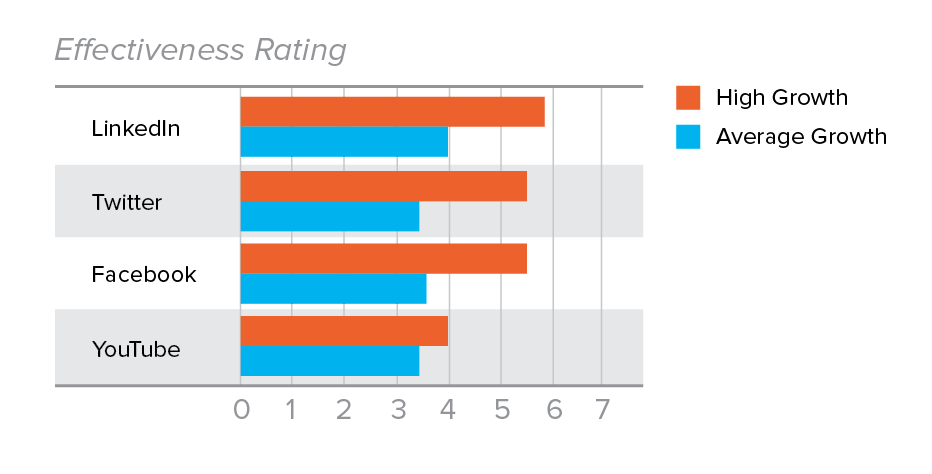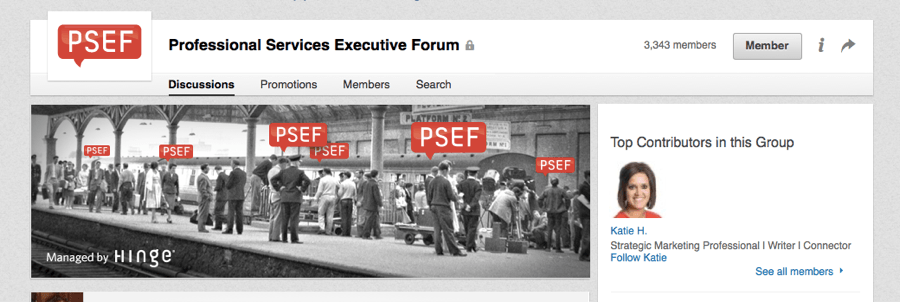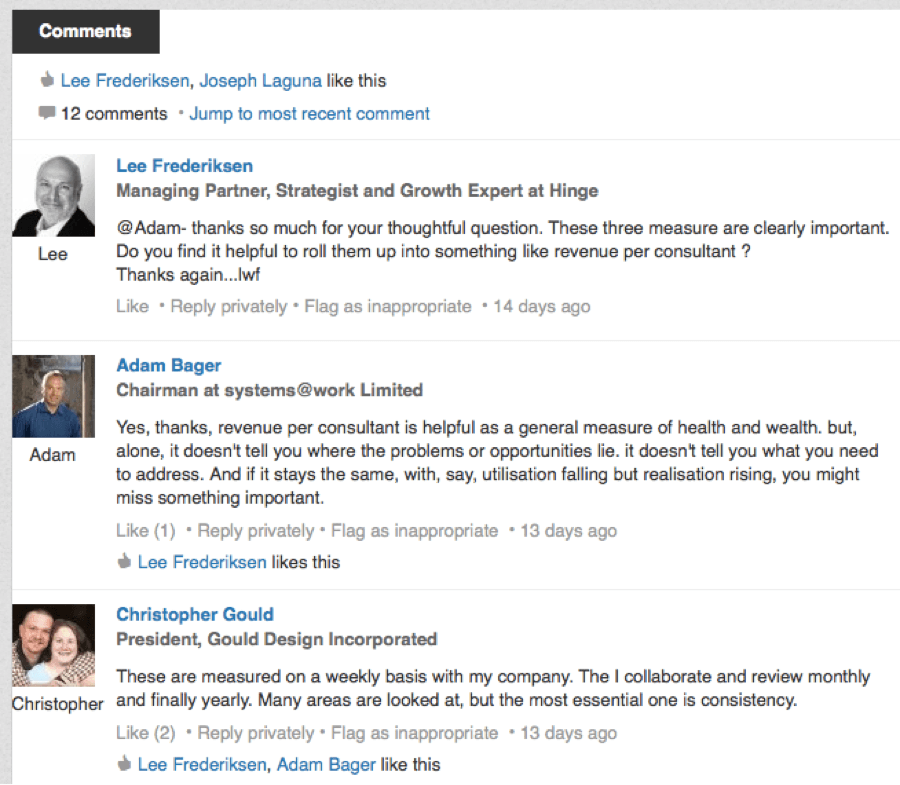3 Ways High Growth Firms Use LinkedIn Groups to Increase Visibility, Connections and Lead Generation

While talking with professional services firm executives and marketers about why they don’t participate in social media, two reasons often cited are:
- They don’t think it is effective for helping them achieve their firm’s objectives
- Their busy schedules don’t leave time to consistently participate
But through our research, Hinge has found that LinkedIn can be a highly effective channel for driving visibility and business development opportunities, particularly for firms that make it a priority to participate.
High Growth Firms Rate LinkedIn as Most Effective Social Media Channel
In a recent study on the online marketing techniques of professional services executives, Hinge asked executives to rate LinkedIn’s effectiveness in helping them achieve their firm’s objectives. We compared responses from firms with the highest growth and profitability (high growth) to those of average growth and profitability (average growth).

Both groups rated LinkedIn as the most effective social media tool. Notably, high growth firms found ways to extract more utility from every social platform — and LinkedIn in particular.
High Growth Firms Participate Effectively in LinkedIn Groups
One key feature of LinkedIn that high growth firms take advantage of is LinkedIn Groups. LinkedIn Groups provide a place for professionals in the same industry or with similar interests to share content, find answers, post and view jobs, make business contacts, and establish themselves as industry experts.

Step 1: Comment on Discussions
After you have followed a few groups for a while, you will get a feel for what a good comment looks like. It’s polite, to the point, adds something of value, and is not too self-promotional.
What is too self-promotional? If your comment is all about you and your service, it crosses the line. Your goal is to establish relationships, not hawk your services. If you follow the rules, you will discover that people appreciate your contributions to their discussions.
An example of thoughtful comments on a discussion in the Professional Services Executive Forum LinkedIn group:

Step 2: Start Discussions
As you start to monitor groups and comment in existing discussions, you will recognize which topics generate ongoing interest and attract comments.
SEE ALSO: LinkedIn Networking Tips: How to Increase Connections and Engagement
At this point, you are ready to start discussions of your own. A great way to launch a discussion is to ask a question. Be polite to people who respond and encourage further interaction with additional questions.
But don’t start a discussion and then go silent. It’s through your active participation that people learn your name and start to appreciate what you have to say.
An example of an engaging discussion in the Professional Services Executive Forum LinkedIn group:

Step 3: Share Relevant, Useful Content
Now it’s time to share relevant content with the groups that you have been following. This content could be a blog post, article, white paper or presentation — anything you can link to.
The secret is to make it relevant to an ongoing discussion or tie it directly to a question you asked to start a discussion. If it is truly interesting, then people will likely follow the link. Even better, they will like and comment on it, driving the conversation. Posts with the most interactions move to the top of the group discussions page, where more group members will view it and potentially follow links and continue the discussion.
Don’t just promote your latest blog post (unless it has relevance to a larger discussion). This is bad form and comes across as self-promoting. In fact, the content doesn’t even have to be your own. Your goal is to provide useful content, whatever the source.
Save time by sharing content into multiple LinkedIn Groups at the same time. View my video tutorial for step-by-step instructions on how to do that.
Effectively participating in LinkedIn groups will increase your visibility, generate more invitations to connect, and with time, increase qualified leads. Conversations will provide the context you need to connect with your peers in a meaningful way. Other members will recognize your face and appreciate your expertise. Your opinions will gain credibility, in turn becoming a respected member of the group and eventually your industry.
Have you found participating in LinkedIn Groups to be helpful in achieving your firm’s objectives? Share your experiences by submitting a comment.
To learn more about how your firm to create a powerful LinkedIn strategy, check out our free LinkedIn Guide for Professional Services Executives.
On LinkedIn? Join us on LinkedIn and in the Professional Services Executive Forum.
Industries & Topics
Most Popular
- Business Development Strategy: A High-Growth Approach
- A 10 Step Brand Development Strategy for Your Professional Services Firm
- Strategic Marketing for Professional Services
- Digital Branding for Professional Services
- 10 Essential B2B Marketing Strategies to Grow Your Professional Services Firm
- Digital Marketing Strategy for Professional Services
- Rebranding Strategies: A Step-By-Step Approach for Professional Services
- Elements of a Successful Brand 1: Brand Positioning
- The Top 5 Business Challenges for Accounting & Financial Services Firms
- Find Your Differentiator: 21 Ways to Gain a Competitive Advantage for Your Firm
- Elements of a Successful Brand 4: Brand Promise
- What Is the Cost of Video Production for the Web?





Leave a Comment